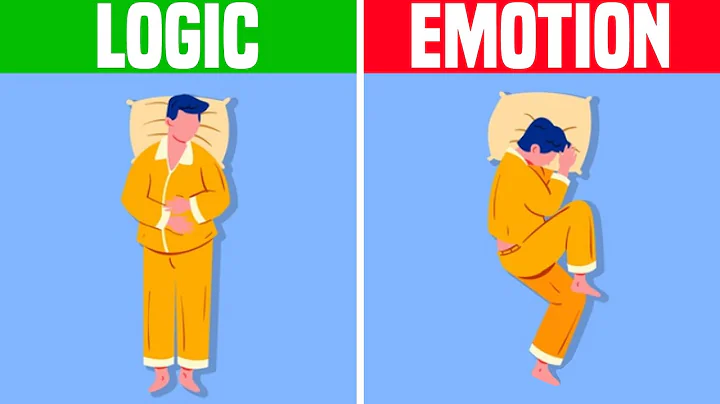Strengthening Indigenous Representation: Enshrining a Voice in Australia's Constitution
Table of Contents
- Introduction
- Australia's Constitution: An Overview
- Enshrining a Voice to Parliament
- The Importance of Constitutional Recognition
- The Challenges of Constitutional Change
- The Uluru Statement from the Heart
- The Role of Indigenous Representatives
- Pros and Cons of Enshrining a Voice to Parliament
- Weighing the Options: Voting Yes or No
- Conclusion
Enshrining a Voice to Parliament: Strengthening Indigenous Representation 🗣️
Introduction
When it comes to representing the interests and concerns of Indigenous peoples, the call for an indigenous voice to Parliament is gaining traction in Australia. This proposal envisions the establishment of a group of Indigenous Representatives who would have the power to advise the government on matters concerning First Nations peoples. The crucial question at hand is whether to enshrine this voice in the country's Constitution. In this article, we will explore what Australia's Constitution entails, the significance of enshrining something in it, and delve into the pros and cons of establishing a voice to Parliament. By understanding these complexities, we can better grasp the implications and make an informed decision when the time for the referendum arrives.
Australia's Constitution: An Overview
Australia's Constitution is the foundational document that outlines the structure and functioning of the country's government. It was written at the turn of the 20th century, uniting the various states into a singular nation. The Constitution delineates crucial aspects such as the composition of Parliament, qualifications for elected officials, and the allocation of powers between the federal and state governments. Importantly, it holds supremacy over all other laws, and only the Australian people, through a referendum, can amend it. However, referendums for constitutional change have historically had a high bar for success, with only eight out of 44 referendums passing so far.
Enshrining a Voice to Parliament
The idea behind enshrining a voice to Parliament is to establish a formal avenue for Indigenous Representatives to provide advice on matters affecting First Nations peoples. While this group of Representatives would not have the authority to pass or make laws, proponents argue that their input is essential for creating legislation that reflects the needs and aspirations of Indigenous communities. By embedding this voice in the Constitution, it aims to contribute to the process of constitutional recognition for Aboriginal and Torres Strait Islander peoples.
The Importance of Constitutional Recognition
Currently, Australia's Constitution does not mention or provide specific provisions for recognizing its First Peoples. While a referendum in 1967 removed discriminatory clauses and enabled the federal government to make special laws for Aboriginal and Torres Strait Islander people, the absence of explicit constitutional recognition remains an issue. Advocates for the voice to Parliament argue that if laws are made that directly impact Indigenous communities, it follows that those communities should have a say in shaping those laws. Enshrining a voice to Parliament would symbolize a commitment to acknowledging and valuing the unique cultural heritage and rights of Indigenous Australians.
The Challenges of Constitutional Change
The process of amending the Constitution is not without its complexities. In order to alter the Constitution, a referendum must be held, requiring the Australian people to vote directly on the proposed changes. This presents a significant hurdle, as referendums have historically struggled to secure the necessary support for passage. Moreover, constitutional change is considered legally and politically difficult due to the stringent requirements and the need for bipartisan agreement. However, the push for a voice to Parliament is fueled by the desire to achieve constitutional entrenchment, making it more challenging to reverse or abolish once implemented.
The Uluru Statement from the Heart
The Uluru Statement from the Heart, a landmark document created by Indigenous leaders, emphasizes the need for substantive constitutional recognition. It calls for a First Nations voice enshrined in the Constitution, giving Indigenous peoples an enduring platform to influence the laws and policies that affect their lives. The statement emerged from a series of regional dialogues and a national convention held in 2017, garnering widespread support from Indigenous communities and advocacy groups. By centering Indigenous perspectives, the Uluru Statement seeks to forge a path towards a more equitable and inclusive Australia.
The Role of Indigenous Representatives
The proposed voice to Parliament would consist of Indigenous Representatives chosen by their own communities. These Representatives would provide advice on issues impacting First Nations peoples, ensuring their unique perspectives are considered in the decision-making process. While they would not possess legislative powers, their role would be to inform Parliament and contribute to the development of policies and legislation on issues such as land rights, cultural preservation, and health disparities. This consultative body aims to bridge the gap between government and Indigenous communities, fostering a more inclusive and representative democracy.
Pros and Cons of Enshrining a Voice to Parliament
Proponents of enshrining a voice to Parliament highlight several advantages. It would provide a formal mechanism for Indigenous representation, allowing for meaningful participation in the democratic process. By recognizing First Nations peoples in the Constitution, it would acknowledge their historical and ongoing connection to the land, culture, and sovereignty. Additionally, constitutional entrenchment would help safeguard the voice to Parliament from being easily dissolved or overlooked by future governments.
However, there are potential challenges and concerns. Critics argue that creating a constitutionally enshrined voice may have unintended consequences, leading to divisiveness and undermining the principle of equality. There are concerns about the practicality of implementation, the potential for conflicting voices, and the impact on existing parliamentary structures. Balancing these perspectives is crucial for ensuring that any decision made is both fair and considers the best interests of all Australians.
Weighing the Options: Voting Yes or No
As Australians prepare for the upcoming referendum, it is crucial to critically evaluate the arguments and implications surrounding the voice to Parliament. Each individual must weigh the advantages and disadvantages, considering the potential impact on Indigenous self-determination, national unity, and the pursuit of a more inclusive society. By engaging in informed discussions and reflecting on the broader socio-political context, Australians can make a decision that aligns with their values and aspirations for a fair and equitable future.
Conclusion
The push for constitutional recognition and the establishment of a voice to Parliament for Indigenous Australians represents a significant step towards rectifying historical injustices and empowering First Nations peoples. Enshrining this voice in Australia's Constitution would signify a commitment to inclusivity, respect, and collaboration. As the referendum approaches, it is imperative for all Australians to educate themselves, engage in constructive dialogue, and vote based on their conviction to shape a nation that recognizes and values its diverse communities.
Highlights
- The call for an Indigenous voice to Parliament seeks to strengthen Indigenous representation in the decision-making process.
- Australia's Constitution, the foundational document, holds supremacy over all other laws and can only be changed through a referendum.
- Enshrining a voice to Parliament aims to provide formal recognition and representation for Indigenous peoples.
- Indigenous Representatives would have the power to advise the government on issues concerning First Nations peoples.
- Constitutional recognition would acknowledge the historical and ongoing connection of Aboriginal and Torres Strait Islander peoples to the land and culture.
- The Uluru Statement from the Heart emphasizes the need for substantive constitutional recognition and a voice enshrined in the Constitution.
- Establishing a voice to Parliament presents challenges, including the difficulty of constitutional change and the need for bipartisan agreement.
- Pros of enshrining a voice include meaningful Indigenous participation and safeguarding the voice from future dissolution.
- Concerns raised include potential divisiveness, practicality of implementation, and impact on existing structures of governance.
- Australians must critically evaluate the proposal and make an informed decision when voting in the upcoming referendum.
FAQ
Q: What is the purpose of enshrining a voice to Parliament in the Constitution?
A: A voice to Parliament aims to provide Indigenous representatives with a formal platform to advise the government on issues concerning First Nations peoples. By enshrining it in the Constitution, it ensures enduring recognition and influence in the decision-making process.
Q: Are there any guarantees that the voice to Parliament will be effective in creating positive change?
A: While enshrining the voice in the Constitution does not guarantee immediate change, it emphasizes the importance of Indigenous perspectives and sets a precedent for inclusive governance. The effectiveness of the voice will depend on ongoing collaboration and the willingness of governments to engage with Indigenous communities.
Q: What are the challenges in amending the Constitution through a referendum?
A: Referendums for constitutional change in Australia have historically faced significant obstacles. They require a double majority, meaning a majority of voters nationwide and within a majority of states. This high threshold makes it difficult for proposed changes to succeed.
Q: How does the voice to Parliament differ from existing Indigenous representation?
A: The proposed voice to Parliament aims to enhance Indigenous representation by establishing a body specifically dedicated to advising the government on matters concerning First Nations peoples. It seeks to amplify Indigenous voices and ensure their perspectives are considered in the legislative process.
Q: What happens if the referendum does not pass?
A: If the referendum on enshrining a voice to Parliament does not pass, the current state of Indigenous representation will continue without constitutional recognition. However, the discussion and momentum around Indigenous rights and self-determination are likely to persist, potentially leading to alternative avenues for change in the future.
Resources







